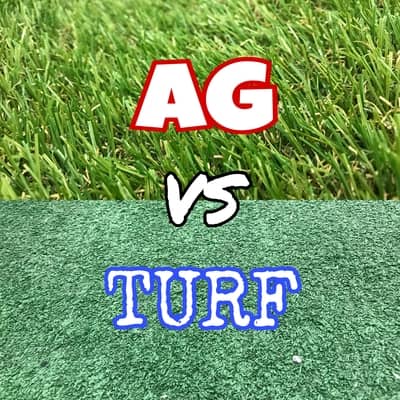
The most famous soccer brands in the world like Nike and Adidas have created different boot soleplates for several playing surfaces, which sometimes tends to confuse new buyers.
Among those soleplates we find Artificial Grass soleplates (AG) and Turf soleplates. Most people tend to think that both are the same, but they are not. It is important to recognize the difference between both to buy the correct pair of boots for the surface we are playing at.
So, What’s the difference between turf and AG? Brands call one surface AG and the other turf to differ them from one another, but both are artificial grasses (synthetic grasses that simulate natural grass) just that built and installed in different ways, with different levels of quality and performance between each other.
What brands call Artificial Grass (AG) is what is correctly called Third Generation AG and what they call Turf is what is correctly called First Generation AG. Both have HUGE differences in quality between each other.
In this article, you’ll learn the difference between one another and you’ll see some pictures to have a better idea of what I’m talking about. Also I’ll help you choose the correct soleplate for the surface you are playing at.
What is Artificial Grass (AG)?
Artificial Grass is the best synthetic grass in the market that simulates natural grass in the best way possible. Usually you can see this type of grass at big club stadiums and in fields where professional players train. Here is an example of a view from a distance of an Artificial Grass Field.
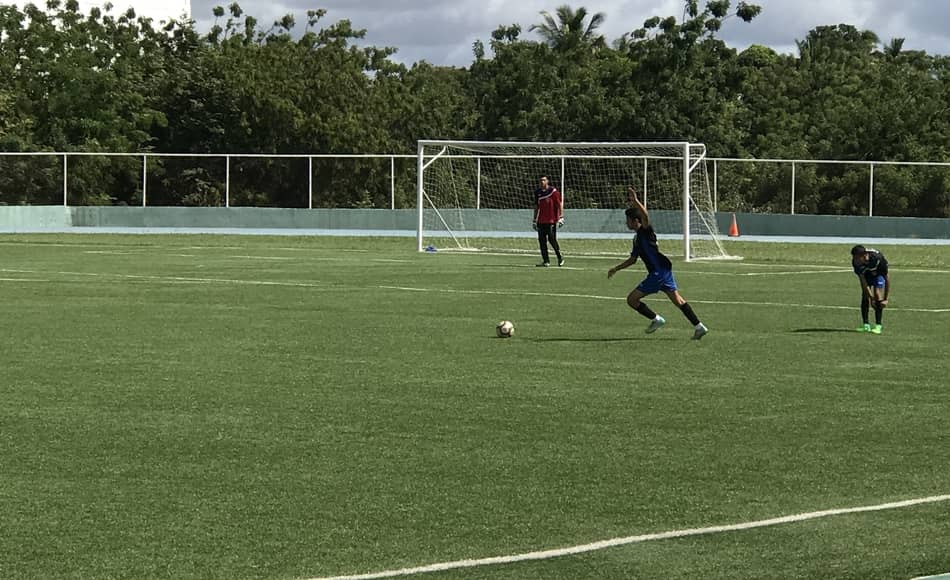
As you can see, from a distance it looks almost the same as natural grass, but it is very different from it. AG is a more abrasive surface than natural grass. This means that if you fall, your body will suffer a higher friction with the surface, running a great chance of getting scraped or burned.
However, AG is the best quality surface referring to Synthetic Grasses. That’s why it is called Third Generation Artificial Grass.
Here is a closer look to a Third Generation Artificial Grass:
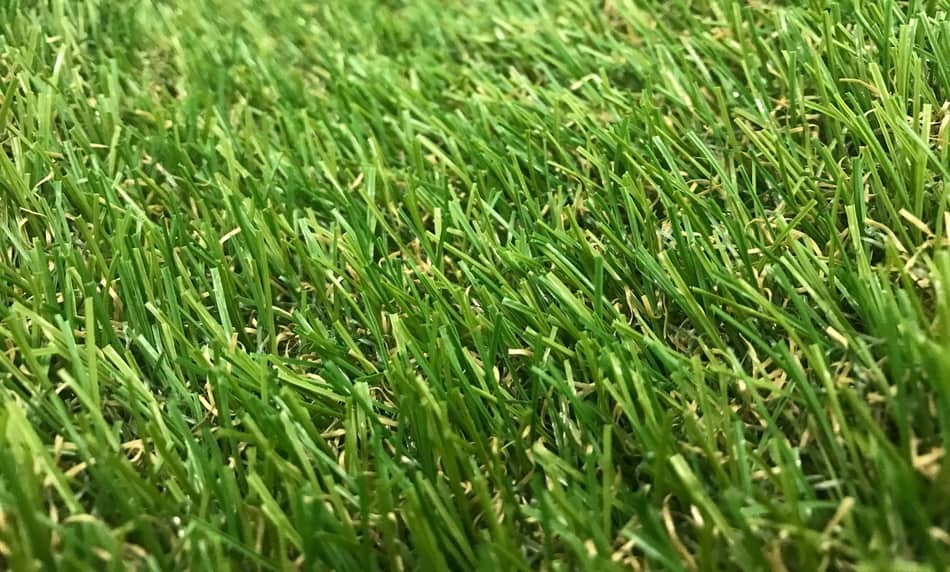
You can appreciate that the “hairs” of the grass (that’s what I call them) are considerably long. This gives AG a certain level of deepness to the surface.
Also, when installed, they pass through strict FIFA requirements. They need to have a certain amount of sand, rubber, and other materials below it to have as the end goal a very cushion feel that simulates very well the feel from a natural grass field. Thanks to this, in AG fields the bounce of the ball is completely natural.
What boots/cleats to use in AG?
The best soleplate to use in this types of surface is the AG (stands for artificial grass) are specialized soleplates that brands make for these types of fields. They look like these:

As you can see, they have rounded rubber studs. The reason why they are so good is because the studs have the exact length necessary to give support in this surface.
In the other side, they don’t penetrate the ground like cleats for natural grass. They actually lean on top of the surface. This is very good because it can prevent injuries from the studs getting stuck in the grass. Also, they will be more durable to the AG abrasive surface.
Investing in a good pair of soccer cleats will prevent you from losing money from durability issues in AG and turf. Make sure to see my Recommended Soccer Cleats article to take a wise decision before buying.
In these types of fields, you can also use FG soleplates (stands for Firm Ground). FG will work just fine in this surface. This surface has a level of deepness to it, so it will not represent any danger to you or the shoe. Adidas have soleplates that they claim to be AG/FG, meaning they can work fine in both surfaces. They look like this:
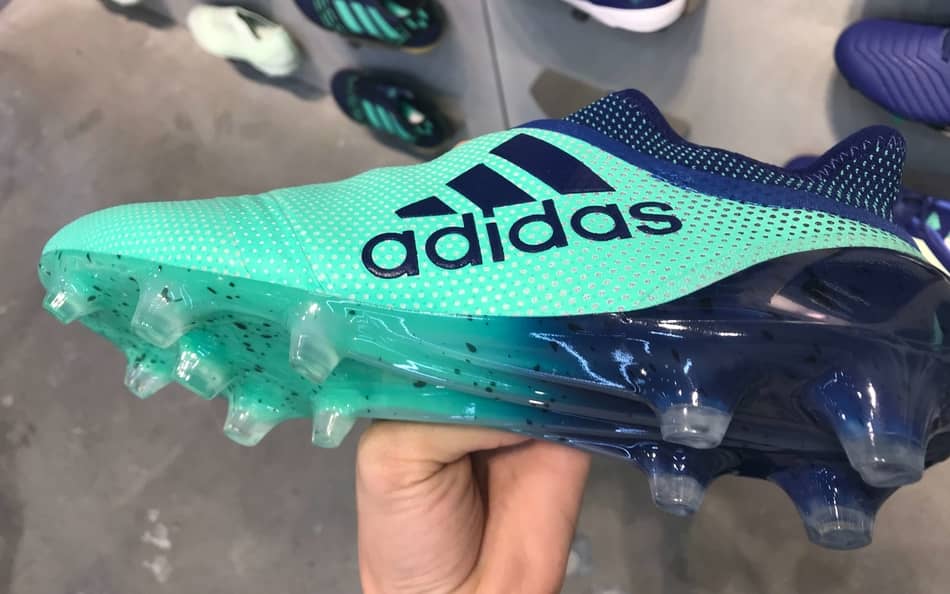
For me this is the same as an FG shoe, just with a different name.
Do not ever use SG soleplates (Soft ground) in this surfaces. SG soleplates are the ones that have metal studs. Using them in Artificial Grass can be very dangerous for you and can run the risk of damaging the surface.
What is turf?
Artificial Turf, is what in real life is called First Generation Artificial Grass. These types of surfaces are very primitive and obsolete and, being true they still exist, it is becoming less and less common to see them everyday.
The reason for this is because of their horrible quality. They are considered an artificial grass too, just as AG, but the playing experience in both is totally different. I actually hate playing in this surface.
Here is a picture of this type of field:
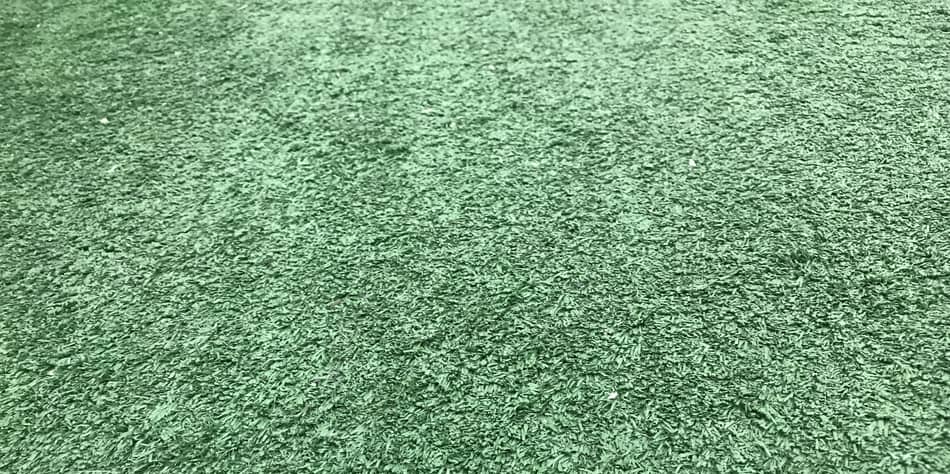
As you can see, it is more kind of like a shallow carpet. The “hairs” of the grass are considerably shorter from the ones of third generation AG. This means that the surface will be very shallow and with little cushioning to it. You can feel it at the moment you step on it. In fact, just by tapping on it with the palm of your hand you can listen the hardness and roughness of the ground.
There are very good turf shoes out there to play soccer. Lucky for you I made an article with the Best Turf Shoes for soccer.
The bounce of the ball is completely unnatural, meaning that it will be unpredictable.
If you fall on this surface, it will hurt a lot. First, because it is very hard and has very little cushioning to it. Second, because this surface is even more abrasive than first generation AG. You’ll probably get a serious burn or scrap if you slide to make a tackle, so don’t do it.
Third generation AG is HOT, but turf is EVEN HOTTER. It is extremely hard to play in these fields in hot sunny days. This is because of the amount of rubber that these surfaces have. Do you know those black tiny rubber balls? In turf they usually double the amount of these in comparison to AG. Making it hotter and more abrasive.
What boots/cleats to use in turf?
My recommended boots to use in this field are the ones with the Turf soleplate. Here is a picture of ones:

This soleplate is perfect for this field for these reasons:
- They have lots of cushioning for such a hard surface like turf is. They will make you feel a lot more comfortable.
- The soleplate is made from rubber. The will be more durable than anything else in this surface. Remember that the surface is very abrasive and the sole will be exposed to a lot of friction.
- The studs are short. Ideal for a shallow surface like turf.
- Has a great amount of studs to distribute your weight. This will eliminate any possible stud pressure, making you feel more stable.
Sometimes people relate having a turf shoe with having low-end (low quality) shoes. But this not true at all! Big brands are launching turf shoes with excellent quality. In fact, some are exactly the same as the high-end firm ground shoes that the pros use, just that with a turf outsole.
Another advantage of turf shoes is that you can also use them in third generation AG fields. You will not have a very aggressive traction as you would with the AG soleplate, but they will get the job done.
You can also use AG soleplates to play in turf. Remember that AG shoes have rounded studs that do not penetrate the ground, so you have no risk of having your feet stuck and suffering an injury. The only risk you may run using AG soleplates in turf fields is to suffer from stud pressure because of the hardness of the surface. In most cases they will work just fine.
DO NOT EVER use FG or SG soleplates in turf.
They are not made for this surface… period. If you do it, you run a serious risk of getting the studs stuck in the surface, and you can suffer from serious ankle, knee or hip injury! Additional to that, because the surface is so hard, it is possible that the studs break. Wasting a boot that may have cost you 200 dollars or more.
To conclude
Artificial Grass is the name that brands use to call Third Generation Artificial Grass and Turf is the name they use to describe First Generation Artificial grass. Both are synthetic grasses but with huge differences between one another.
Artificial Grass is a surface that simulates the best way possible the feel of a natural grass field. To install them, they have to pass through strict FIFA requirements and conditions.
On the other hand, Turf are very low quality, hard, and abrasive surfaces. They have no level of deepness to it and the ball bounce is not natural at all.
You need to always make sure to choose the correct soleplate for the correct type of field you will be playing at. If you don’t do it, you may run serious danger of suffering a serious injury or damaging your boots.
At the end, in my opinion, nothing will ever feel like natural grass. If you have the opportunity to choose where to play, just forget about AG and Turf and go to play to a natural grass field.

